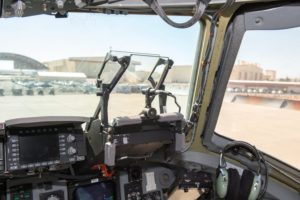
The U.S. Air Force is undertaking a number of avionics upgrades for Boeing [BA] C-17 and Lockheed Martin [LMT] C-130H transport aircraft, as the supplier base for legacy avionics systems falls, according to the Air Force Life Cycle Management Center (AFLCMC) at Wright-Patterson Air Force Base, Ohio. "Diminishing Manufacturing Sources Material Shortfalls (DMSMS) are driving avionics-related upgrades," AFLCMC wrote in email responses to questions from Defense Daily. "The C-17 aircraft was last produced in 2015 and with it most of…














